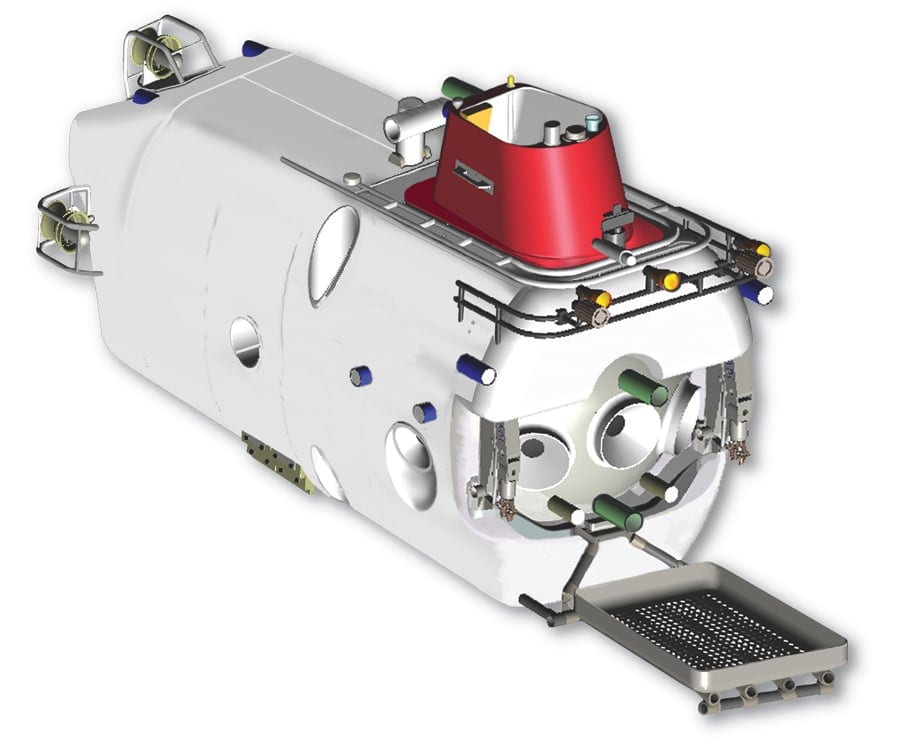Lockheed Martin Successfully Completes Preliminary Design Review for New Scientific Research Mini-Sub
January 7, 2008
Lockheed Martin recently completed a preliminary design review (PDR) for the Replacement Human Occupied Vehicle (RHOV), a next generation three-person deep submergence vehicle (DSV) that will be used by the U.S. scientific community. The successful three-day review was conducted in mid-November 2007.
In August 2007, Woods Hole Oceanographic Institution (WHOI) awarded Lockheed Martin a $2.8 million contract for the initial design of the RHOV, which is intended to replace the DSV Alvin, the human-occupied deep submergence vehicle currently operated by WHOI.
Alvin made headlines for locating a hydrogen bomb lost in the Mediterranean Sea in 1966, discovering deep-sea hydrothermal vents in the late 1970s, and exploring the sunken ocean liner Titanic in 1986.
“Our RHOV team continues to work closely with the scientific community to execute the advanced design on schedule,” said Jim Weitzel, vice president of Lockheed Martin’s Mission and Unmanned Systems business unit in Riviera Beach, FL.
“The completion of Preliminary Design Review is a significant milestone in making this new capability a reality. The team has completed a thorough and highly successful PDR phase, demonstrating to our customer that the RHOV design will address ocean scientists’ needs for a larger and more capable human occupied vehicle which will dive deeper, expanding the ability to reach previously uncharted portions of the ocean.”
The PDR, conducted at Lockheed Martin’s Riviera Beach facility, was a critical program milestone. The key stakeholders for the RHOVincluding WHOI management and Alvin pilots, science users, the American Bureau of Shipping, and the National Science Foundation (NSF)reviewed Lockheed Martin’s proposed design to ensure it met the customers’ specifications.
The PDR also allowed the Alvin pilots and science users to incorporate their unique perspectives into the final design of the new vehicle.
“PDR is an important step toward realizing the dream of the next generation submersible,” said WHOI Vice President for Marine Operations Robert Detrick. “There is no substitute for the human experience of journeying to the ocean depths. WHOI is very pleased with the work Lockheed Martin has done to pass this important milestone in the development of a replacement for the venerable Alvin.”
The initial contract, funded through NSF, includes an option for subsequent construction of the RHOV once the detailed design work is complete and WHOI and NSF approve the final design.
Headquartered in Bethesda, Md., Lockheed Martin employs about 140,000 people worldwide and is principally engaged in the research, design, development, manufacture, integration, and sustainment of advanced technology systems, products and services.
The Woods Hole Oceanographic Institution is a private, independent organization in Falmouth, Mass., dedicated to marine research, engineering, and higher education. Established in 1930 on a recommendation from the National Academy of Sciences, its primary mission is to understand the oceans and their interaction with the Earth as a whole, and to communicate a basic understanding of the ocean’s role in the changing global environment.

